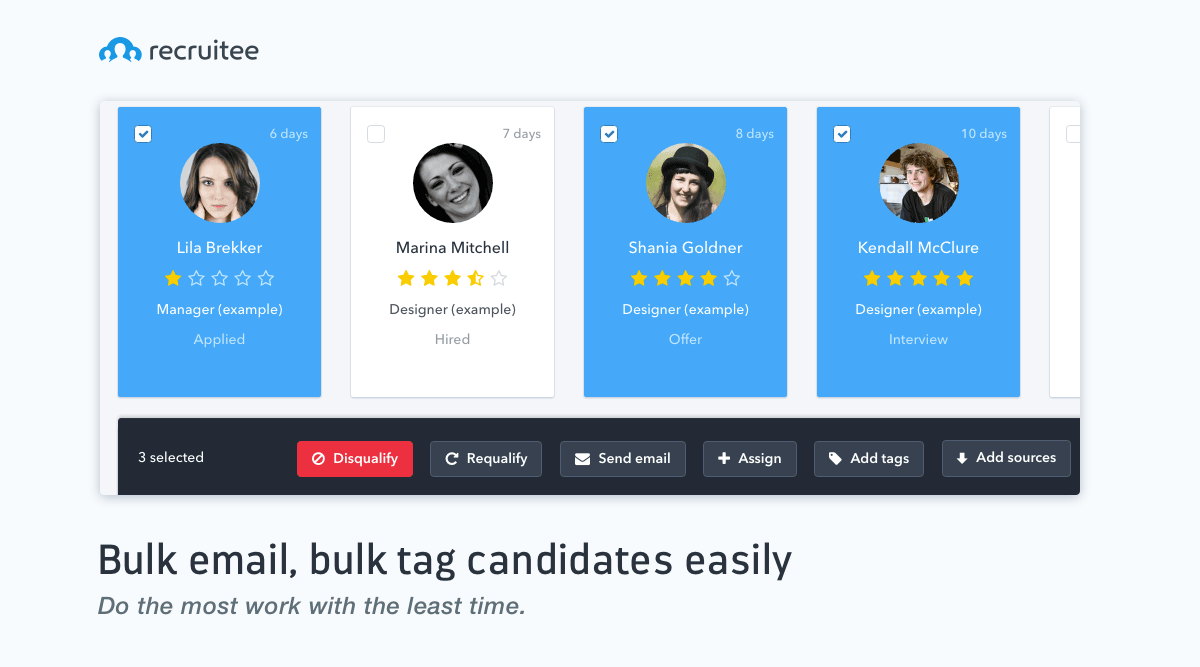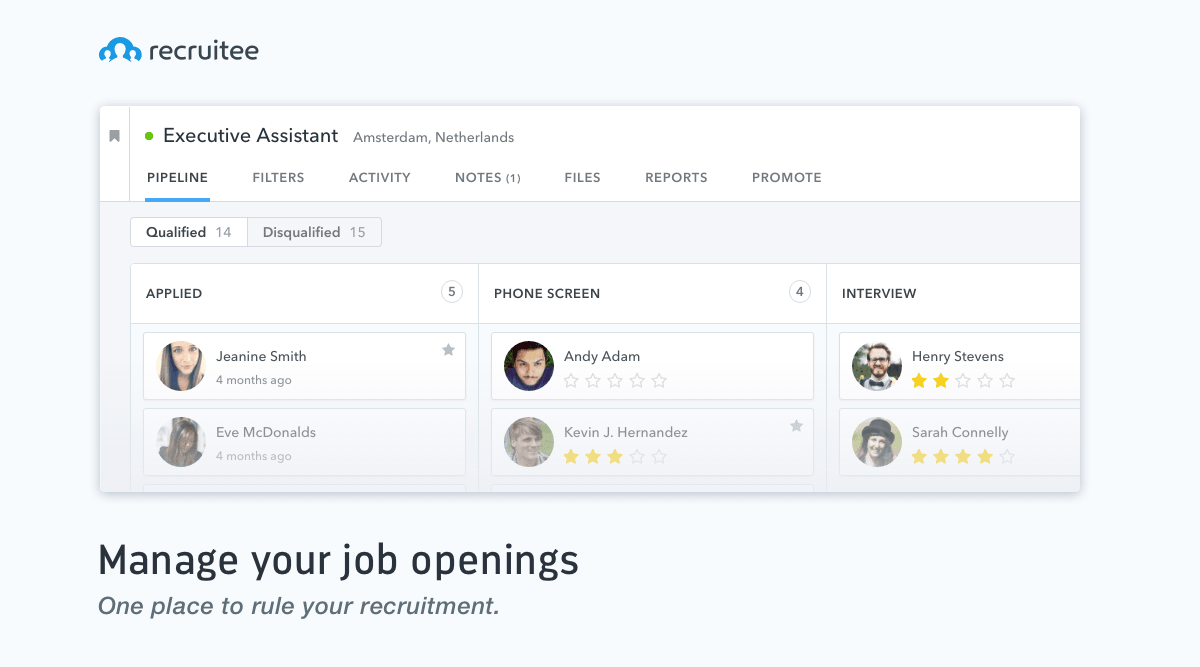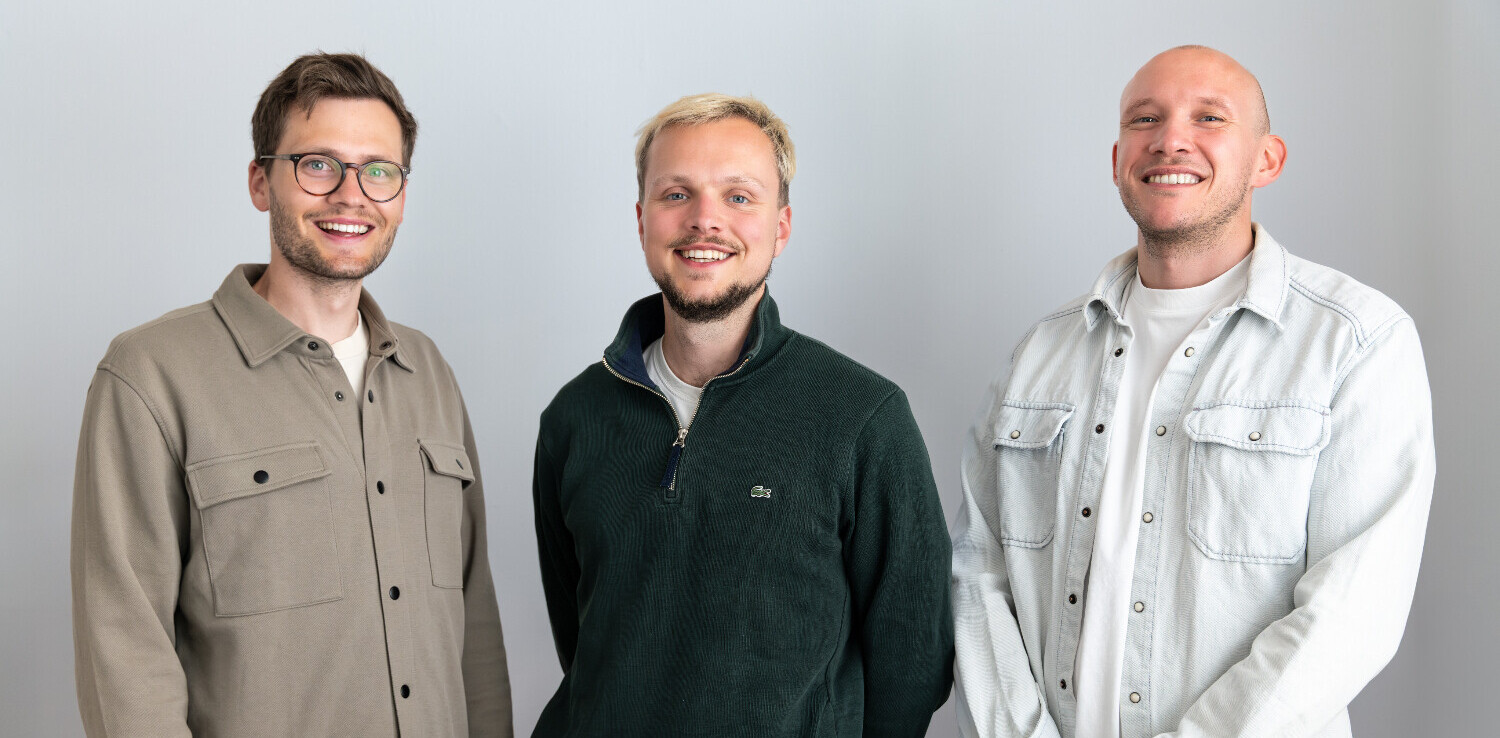
Stories of Scale is a content series we’re doing with startup participants from our conference in a partnership with EQT Ventures, sharing growth stories and lessons from industry insiders centered around 4 pillars: technology, business, human optimization, and communication.
During our TNW Conference in Amsterdam, we sat down with Perry Oostdam, co-founder of Recruitee. With powerful features that boost flexibility and connectivity, the recruitment software allows users to streamline their hiring practices. In less than two years, the company has attracted clients in over 56 countries and reports over 5,000 daily active users.
After a brief foray into the app market of gamification with their company, GeoRun, the founders – Perry Oostdam and Pawel Smoczyk – wanted to take on a bigger challenge.
In our talk with Perry, we learned how Recruitee used an obsession with tracking metrics to its advantage, and how they created their own ones, allowing them to more successfully navigate the competitive SaaS industry and overcome the difficulties of scaling in SaaS.
Bootstrapping and cold calling
“I met my co-founder 5 years ago – Pawel Smoczyk. He’s based in Poland and I met him online on founder2be.com, a kind of matchmaking platform for entrepreneurs, and we were both looking for a co-founder and wanted to run an IT company, and he had the idea to start a mobile gaming company – G.P.S. games – and I found it really interesting so we met up.”
“My first response was like, ‘Hey, from mobile games to recruitment software it’s boring’, but we said ‘boring or sexy is not on the criteria list, or you know, exciting’. So, it was a clear customer pain. We knew how to be different, we looked at the markets already like three years ago, we found it to be very revolutionary.” This identification of a problem in the SaaS market and the formulation of their MVP was followed by lots of manual labor and determination.

Attending a startup forum at RockStart Answers, Perry asked the following to the audience of attendees, “How do we get 300 beta users to start testing it and have a really objective opinion on the feasibility of this model?” Someone said, ‘Just keep calling until you have that number’ and I thought ‘Hey, why not?’ So we scraped a couple of job boards and we had 50,000 leads: name, job title, phone number, email, the number of jobs they have, and we started calling. You have to learn a lot as you go because you hear 90 percent no in cold calling. It’s hard, but if you practice your pitch, you get a feeling of the market and you know how to be different over the phone.”
The founding partners also sat down to work out a list of 30 criteria on which they could score their team members. “These criteria relate to the mind, to the culture – so you could say the brains, the heart, and the performance. I score all these criteria within our template and I compare them over time, every month or two months or three months, sit down, and see how their overall score is evolving and if they’re getting better in certain aspects or going down in certain aspects.”
Building software that will stand out
“We’re facing a market which is highly competitive – the applicant tracking software market is, I think at least from my research, by far the most competitive market. If you just look at the bids it’s just more favorable in other industries, so the biggest challenge for us is to be different in this industry.” Perry goes on to say, “the only thing to do, I think for us at this point, is to hire the right people that care about that and take your piece of the business to be different.”
With the intent to improve the performance tracking internally, Perry shares a metric they created, which they call the MRRac (the acquisition cost of one new euro MRR): “We look at your cost over certain channels. For instance, you spend $6,000 a month on Google, and you look at how much monthly recurring revenue is coming from that channel a month later or two months later from that campaign. With $1,000 of monthly revenue coming back, we know our MRRac is 6.”
“It is basically the earn back time on your spending, and by making such a metric we can suddenly compare all the channels; you can compare Google, Facebook… You can even compare the effectiveness of sales guys.”
This analytical approach was also applied when hiring employees and taking on a remote CTO, the founders moved ahead with someone who was the right fit for the team. Perry believes that as long as both parties are open to it and if “you force yourself into these remote working structures, then even your team is scalable just like your sales are scalable.” He continues, “The only thing we can base performance on from the CTO’s perspective is looking at the codes he’s posting at the end of the week and seeing ‘OK, there’s nothing to improve, and everything is delivered on time.’”

Getting from cold to warm leads
Demonstrating their dedication to the lean startup approach, Perry tells us how the founders identified 10 criteria that they would try to test out, including being international, no sales meetings, ensure we go on a bike and meet clients if needed, but sales meetings shouldn’t be required to sell.” Adding to this, he mentions, “We really don’t do any physical meetings; we meet everyone over Skype. This is why we can stay very competitive in pricing and really aim for scaling internationally.”
Even during the early days of the company, Perry wasn’t sure if their ideas would be a success amongst their list of criteria for conducting a sustainable and profitable business.
“It’s really great to see that from Amsterdam and Poznan we were able to acquire users worldwide, you know, via inbound marketing, via ads and just holding on to those initial criteria, really making it scalable, that’s a lot of fun.”
Get the TNW newsletter
Get the most important tech news in your inbox each week.





